The ballad of the tank M3 "Lee / Grant." History of creation (part three)
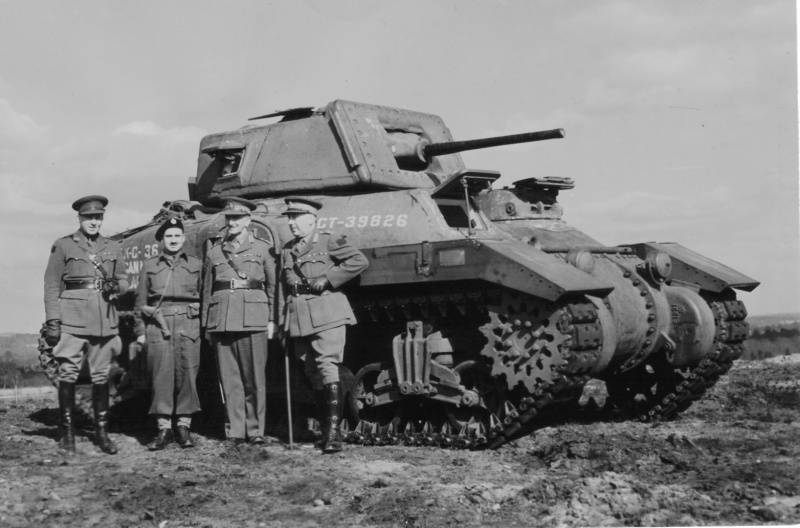
Canadian officers on the background of the tank RAM Mk I
To begin with, installing the engine horizontally with a transmission drive through bevel gears, they would receive its convenient maintenance, uniform cooling, and - most importantly - it would reduce the height of the tank by at least 30, see. Less height - less visibility, less armor , less weight or thicker armor. Not much, but thicker. Why the Americans did not do so - is unknown. Technically it is quite feasible.
For a German tank, the installation of an American engine would be a gift of fate! At least 55 "horses" would be added, which would significantly improve the performance characteristics of this tank. And on the size of its installation would not be reflected in any way!
But for our T-34 installation of the American engine would be equal to the catastrophe. Of the benefits - only the displacement of the tower back and the transfer of the hatch from the frontal armor plate on a horizontal sheet in front of the tower. Well, even less pressure on the front rollers, improved aiming, increased accuracy of shooting, but all this is trivial. Because the power of our diesel and their gasoline engine were incomparable. The T-34 on 26 t weights - 500 hp or 19,5 hp / t and speed 54 km / h. With a power reserve of 380 km. At T-III - 20 t, 285 hp or 14,6 hp / t, 67 km / h and power reserve 165 km. And M3 - 27.9 (30) t - 340 hp 39 km / h With a power reserve of 193 km. With the American T-34 engine, the specific power of the entire 13 hp / t, that is, less than that of the German T-III, would have turned into a slow and slow-moving “iron” with a small power reserve and in addition also with high fire risk . That's how much depends on the tank engine, and how its performance characteristics affect the performance characteristics of the entire tank!
On the other hand, when there is a worn-out chassis, there is an engine that has been “used in” for it, and the production of all other “cubes” is well established, then ... a designer can make from one car ... a multitude of machines for various purposes, which is beneficial in all respects. The Americans did the same with the chassis and engine of the M3 tank. The tank itself was replaced with the M4, but the factories that produced the early model were redesigned for the production of the M7 self-propelled howitzer, produced from 1942 to 1945. The first two samples were assembled at the Baldvin plant in February 1942, and the main production was deployed at the American Locomotive company, Pressed Steel, and Federal Mashine & Welder plants, which made a total of 4267 machines. of this type, armed with a 105-mm howitzer.
М7 "Priest" ("Priest"). Aberdeen Proving Ground, United States.
"Priest" on the battlefield.
Americans paid much attention to engineering machines based on the M3. The first such vehicle was an experienced artillery tractor Т16. The armament was removed from the base machine, a winch was placed inside the hull, but it turned out that it was cramped inside. But the experimental machine Т2 went into the series. They also removed the turret from the tower, removed the guns, but then installed a crane boom with a load capacity of 10 t, a winch, and large boxes for spare parts and tools. They started producing these cars in September of 1943, and they were very helpful. They were designated as М31В1 (on М3А1 chassis) and М31В2 (on М3А5 chassis). In the English army they were designated as ARV I. Moreover, the British made their own car on the M3 chassis, which differed from the American one in that the crane boom was collapsible and was mounted on a hull side.
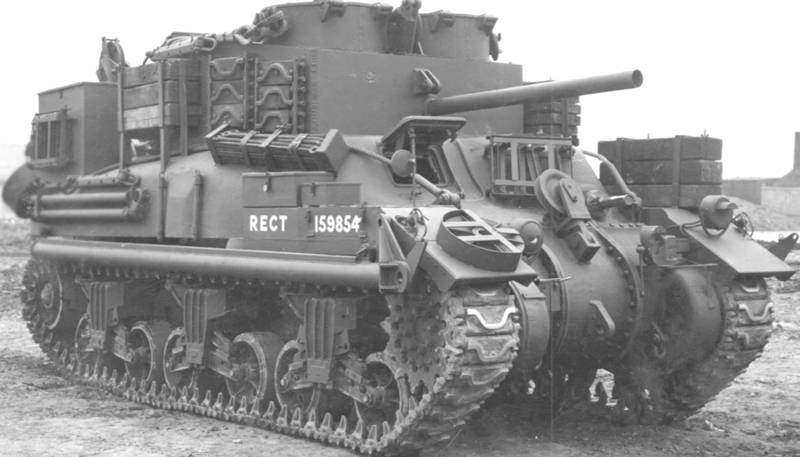
RAM ARV I
The M3 running gear came in handy and for the creation of mine-sweepers. The American model was named T1 and had a working device of dual disc rollers and a separate “crushing” roller for them. But he showed no advantages over the English version of the Scorpion, also based on the M3. The British went the other way. They removed the cannon from the sponson and placed here, but outside, two “tanks” for two “Bedford” engines, which rotated a drum with chains through the shaft, carried forward on two lattice consoles. They were located on the site of boxes for spare parts, and the shafts from them went along the sides of the tank, because of which the side hatches on it no longer opened. This was the “Scorpion II”, and it was clearly not the best engineering solution, since it became possible to climb into this car only through the top tower hatch. Therefore, they were replaced by “Scorpion III”, already with one motor on the right side of the sponson and one shaftline, which no one interfered with. True, chains, hammers on the ground raised such dust that the driver led the tank almost blindly. On the other hand, in the case of a massed attack and a rear wind, no smoke screen was required!
Scorpion III
Americans supplied the M3 tank to Canadians, and along with a complete set of drawings and all the other technological documentation - just take it and do it. But ... they did not like this tank. Therefore, they decided to make their own tank on its chassis, and already in January 1941 of the year issued such a task to Montreal Locomotive Work. First of all, according to the rules of English traffic, the driver was seated on the right. The upper part of the hull was made entirely cast, and the turret was also cast, and without the upper machine-gun turret. The hull became noticeably lower and acquired almost symmetrical outlines. “Almost” - since the tank turret was still set up by the tank gun, but to the left of the hull. In this car became like a tank "Crusader" of the first editions. The gun was also traditionally English, caliber 40-mm, but with the possibility of replacing the 57-mm gun and 76-mm gun with a short recoil of CS ("close fire support"). Hatches along the sides were preserved, but the driver did not have his own hatch.
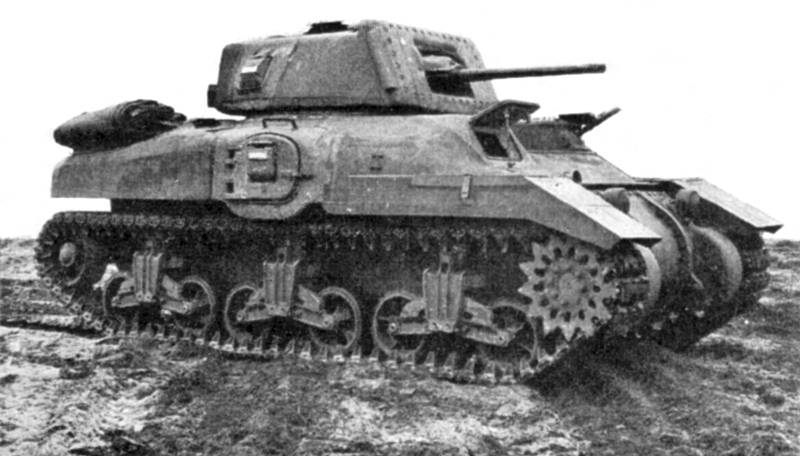
RAM (Rem) Mk I
The car was ready in June 1941, received the designation RAM Mk I, was tested, but only 50 of such machines was made, and then the production of the Mk II began with an 57-mm gun. These were 1094 pieces, but the first ones went to training units. If Canadians had put a long-barreled 76-mm gun on this tank, they would easily have overtaken the Americans and would have gotten a better tank than the Sherman. And the prototype of the famous 17-pound was ready at the end of the 1941 of the year, and if you try, you could combine this gun and this tank. But this was not done then.
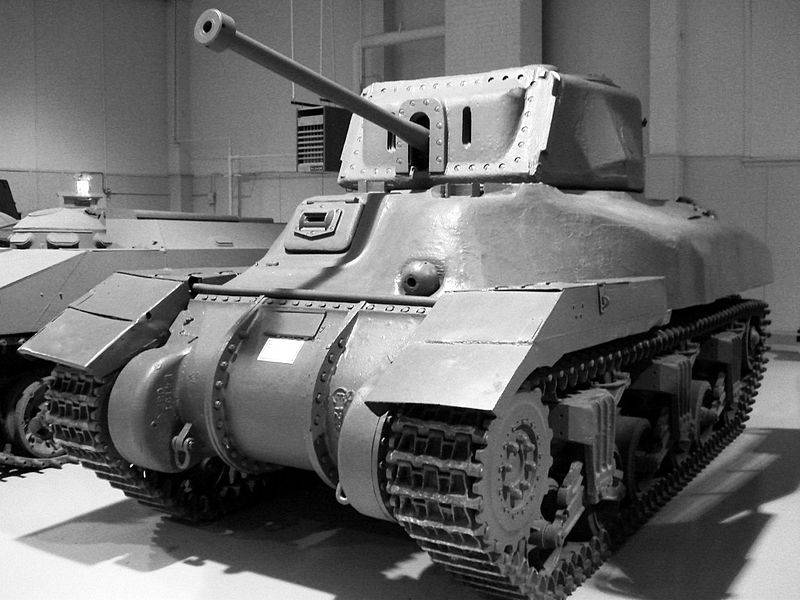
RAM (Rem) Mk II
But also, like the Americans, the British began to release their own ACS “Sexton”, but under their 25-pound gun and on the RAM chassis. The production of the machine was started in 1943 and completed in 1945. In total, 2150 such SAUs were produced.
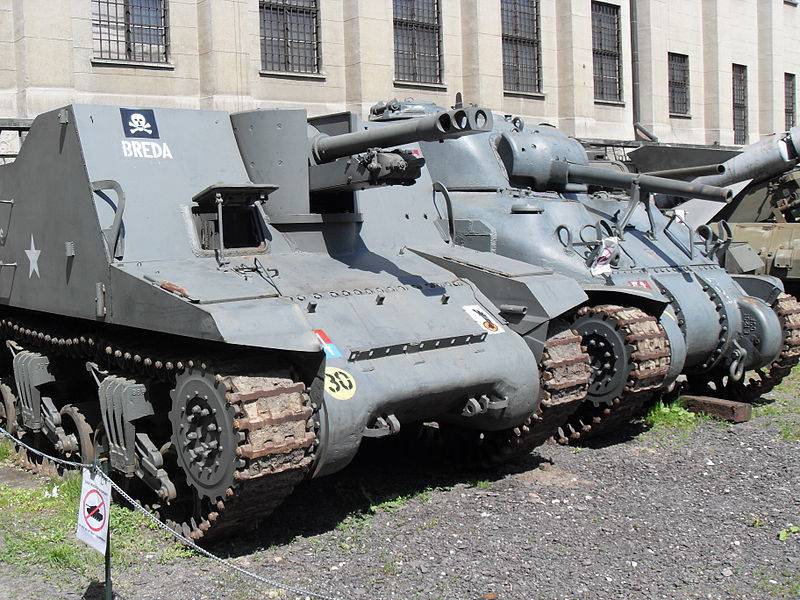
SAU "Sexton" ("Ponomar") in the Museum of the Polish Army.
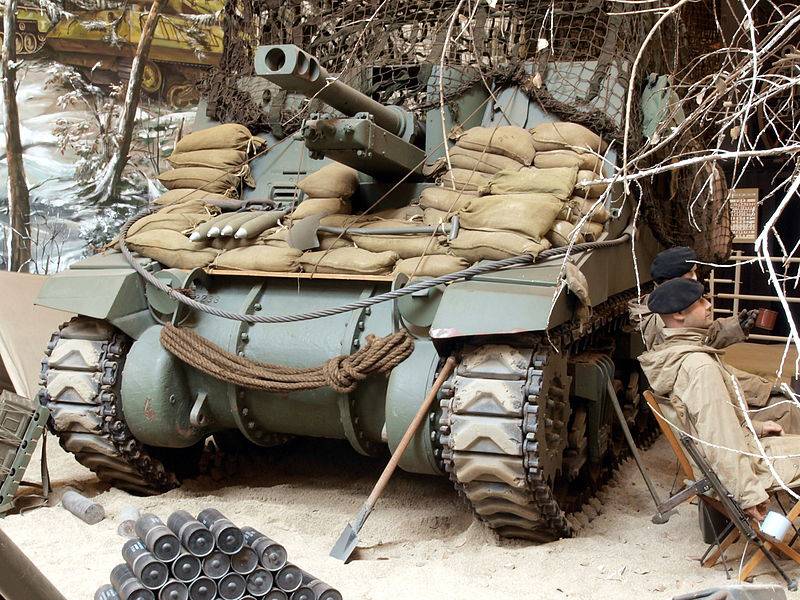
SAU "Sexton" in the museum in Liberty Park in Holland.
The M7 chassis and the English SAU were used for conversion to the Kangaroo armored personnel carriers. Weapons were removed from them, and the “cockpit” was reequipped in such a way that it now contained 16 soldiers. These were the first cars of this type, and they began to be used in the English army.
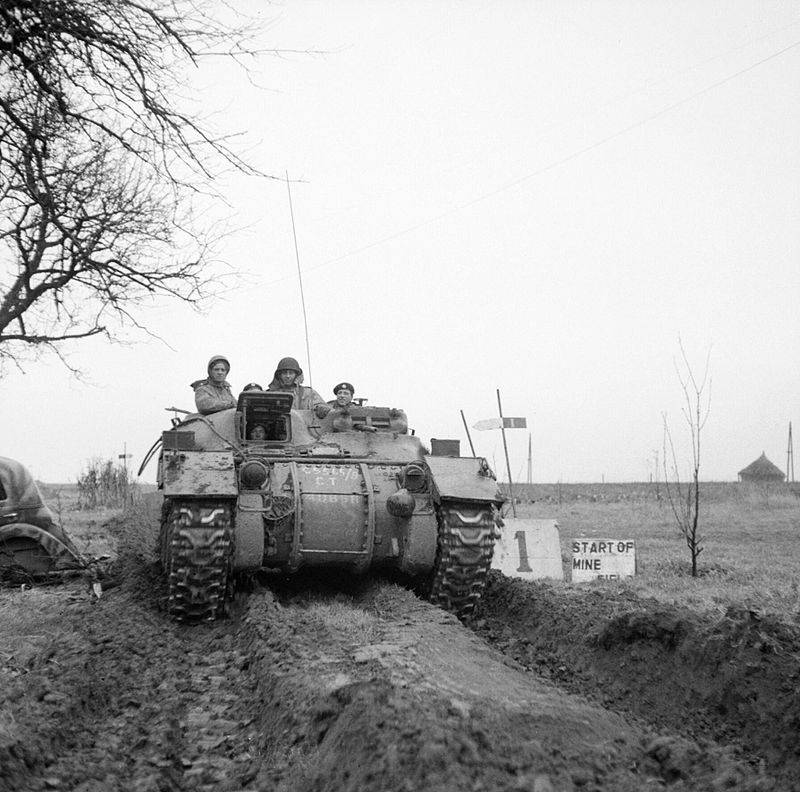
BTR "Kangaru" in a combat situation.
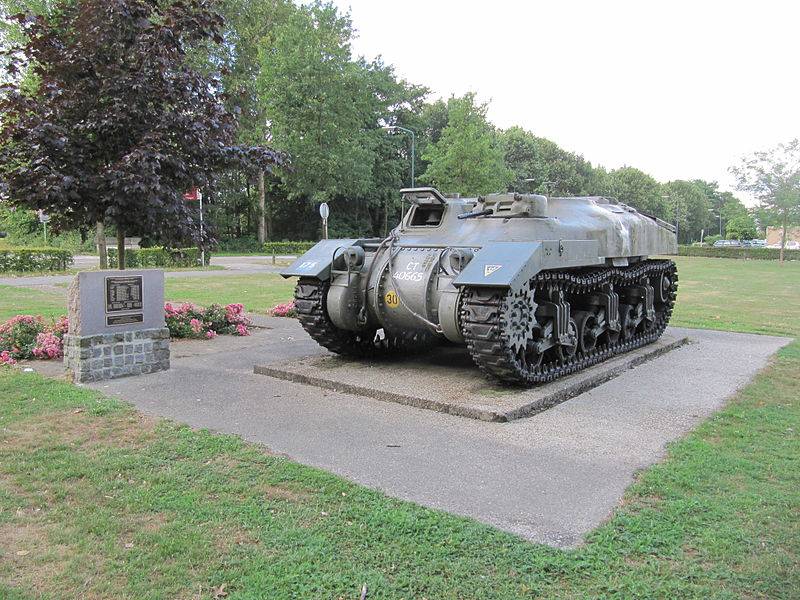
BTR "Kangaru." Monument to Canadian soldiers in Holland.
However, the most unusual machine based on the M3 became the M3CDL tanks or Channel Defense tanks.
"Matilda" CDL in Bovington.
And it was like this that back in 1915, the English army officer Oscar de Toren presented an interesting project, the essence of which was to blind the enemy in the dark with a powerful source of light. As the war soon ended, the government did not give him money. But in the 30s, he was resuscitated and began to develop again, with Major General Fuller himself, the largest expert in tank weapons at that time, being his technical advisor. He was financed by the Duke of Westminster, which also speaks volumes.
The first demonstration of the installation was held in 1934 in France, then in 1936, and then the British War Department showed interest in it. In England, the show was held in 1937 on a plain near Salisbury, and 10 days after the start of World War II, an order was given to immediately issue 300 of such “blinding” installations, which should have been mounted on tanks.
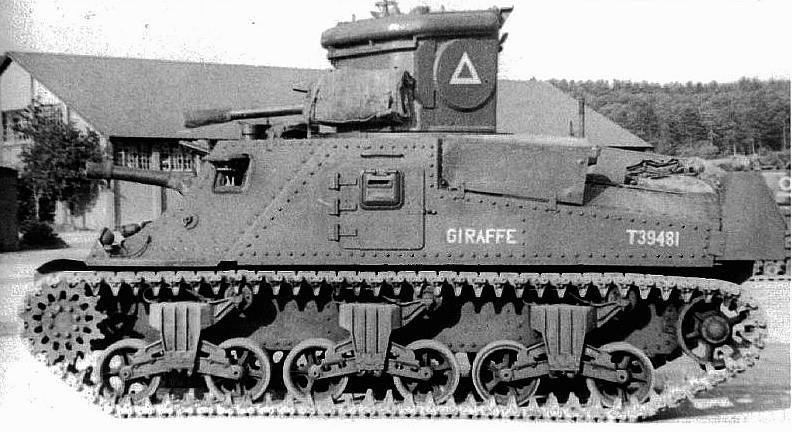
M3 CDL "Giraffe"
The tower, which was installed in this case on the tank, consisted of two compartments: in the left was the operator, in the right CDL device with a light power of 13 million candles! The current to power the two carbon electrodes gave its own motor. An extremely intense stream of light first fell on a parabolic mirror, and then reflected a special flat plate made of polished aluminum through a narrow (so that no bullets would fly) slot two inches wide and 24 inches in height (one inch is 2, 54 centimeter). Anyone who would look at this light in the dark, and even flickering to the same, would immediately go blind, like a man who looked at electric welding!
The device had to flash six times per second, which significantly increased the damaging effect of this installation. There was a machine gun for self-defense in the turret, and the "Matilda" infantry tanks planned to use them. The scattering angle of the beam hitting the tower had an angle of just 19 degrees, but tanks located at a distance of 30 meters from each other could cover the space in front of them at a distance from 180 to 900 meters with rays of light.
The device of the floodlight tower. Back view.
The CDL program was completely secret, and therefore the base where the tanks were reequipped and their crews trained was in Scotland, in the area of the Lowther Castle. The living conditions of the personnel there were “just awful”, but no German spy would have got there, and the reconnaissance aircraft did not fly so far. And it was important, because the tests went at night, and the light was so strong that in the neighboring town of Penrith, it was quite easy to read the newspaper, although it was six miles away! And such a high illumination gave only some 16 tanks!
The life of local farmers also became completely unbearable, as the tanks destroyed the hedges and crushed the crops, but the government paid compensation to everyone.
The first large-scale test of CDL tanks was carried out on 5 in May on 1942, and then repeated for the Americans in the presence of General Eisenhower. He immediately ordered to put CDL towers on American tanks, for which another base was created in South Wales.
The experience of the First World War showed that it is necessary to use such equipment unexpectedly and massively. In addition, it turned out that on the sights of the German 88 anti-aircraft guns there is a special green sun filter, and it allows you to see the slot in the tower (!), And thus direct the gun at it!
Then they decided that it was most advantageous to put these towers on the M3, since the 75-mm cannon on it was preserved. In preparation for the “D-day”, part of the tanks was armed with these towers, but ... they were never used in combat. Because of their secrecy, nobody knew anything about them.
М3 CDL under Remagen.
True, the Americans used these tanks on March 1, 1945, to illuminate the Rhine after capturing the bridge at Remagen. Then, from March 23 to April 5, the British began to use these tanks, and this helped capture several German scuba divers who were trying to blow it up. One tank of the German artillery managed to be knocked out, and attacked other vehicles aviation, but the British did not have losses.
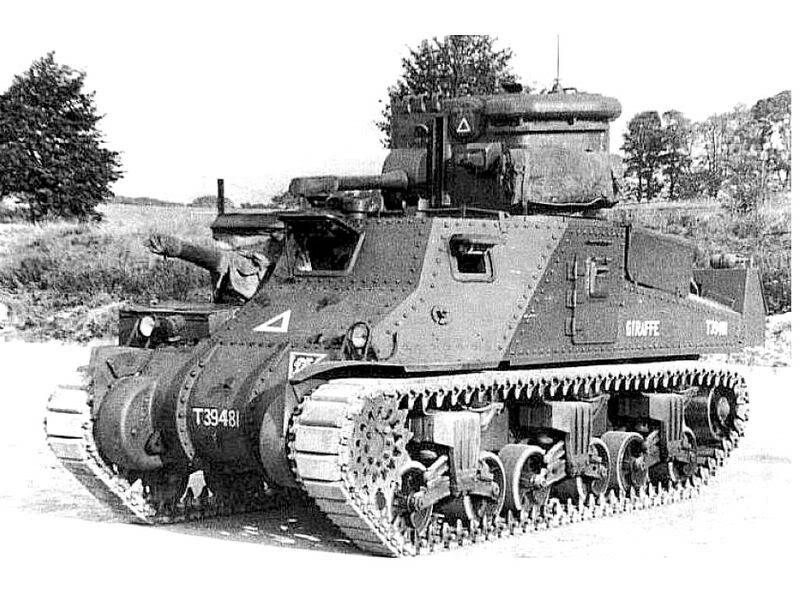
The same "Giraffe", but from another point.
Major General Fuller later wrote that "the greatest mistake of the war" was that these tanks were practically not used. In 1949, the use of CDL tanks, in his opinion, could give the Allies a chance to take all of Germany and prevent Soviet troops from entering, but even then it was not done. The British themselves spent millions of pounds on this 20 project, armed themselves with a “CDL system” around 1850 (!) Machines of various types, prepared 6 thousands of British and 8 thousands of American soldiers for their maintenance and joint actions, but it all ended in nothing!
In June, 1945, the 43-th Royal Tank Regiment with CDL tanks was sent to India, where in 1946, he and the police together participated in suppressing street riots in Kolkata. As police cars, CDL tanks proved to be very good, but of all tanks of this type, only one survived to our days, and today it can be seen in the Royal Tank Museum in Bovington.
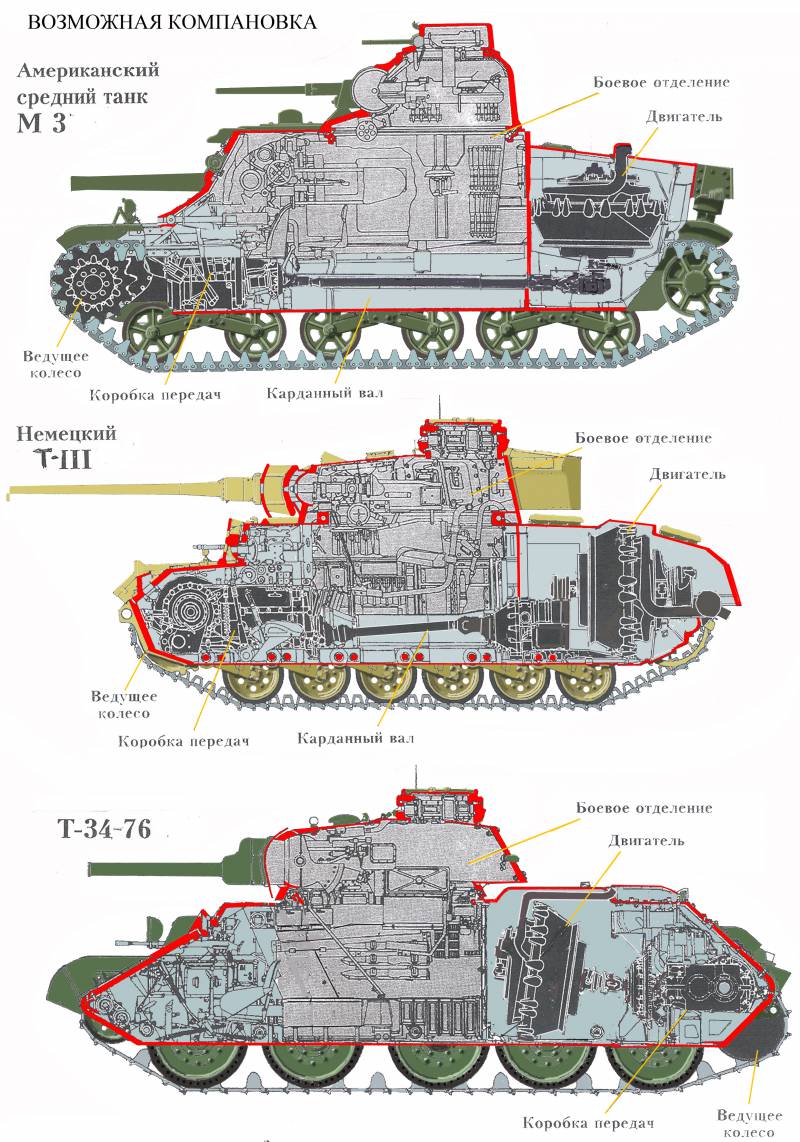
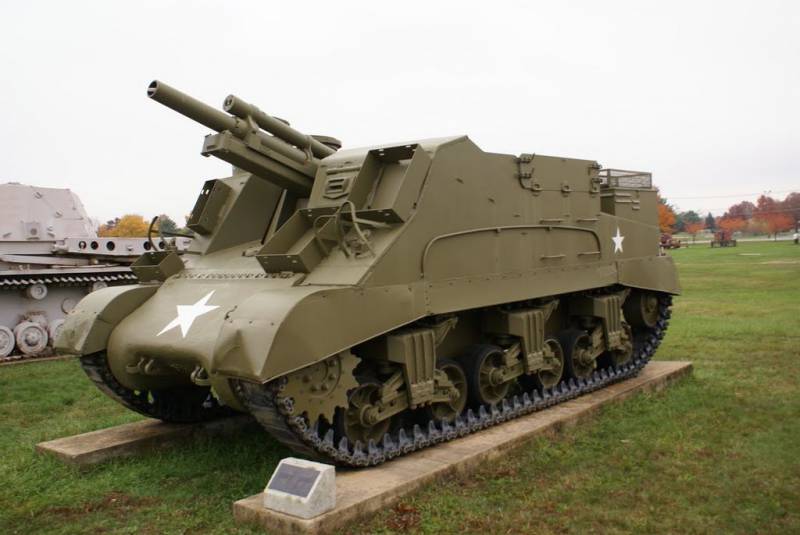
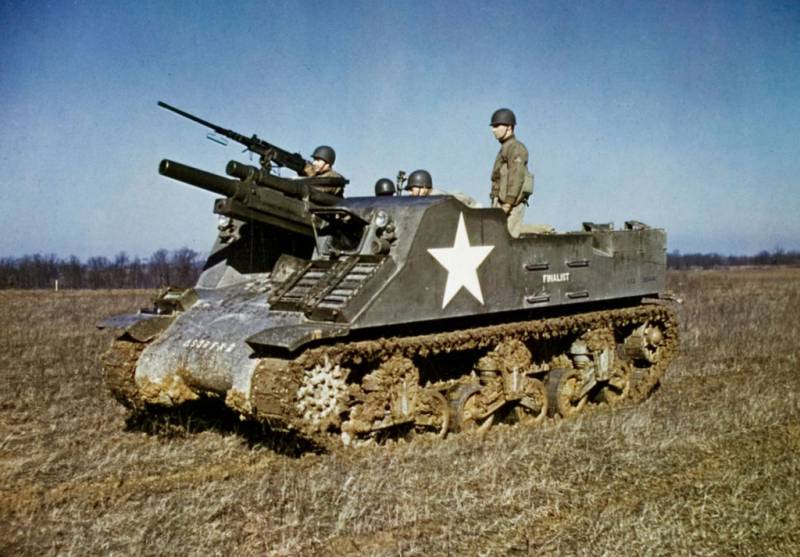
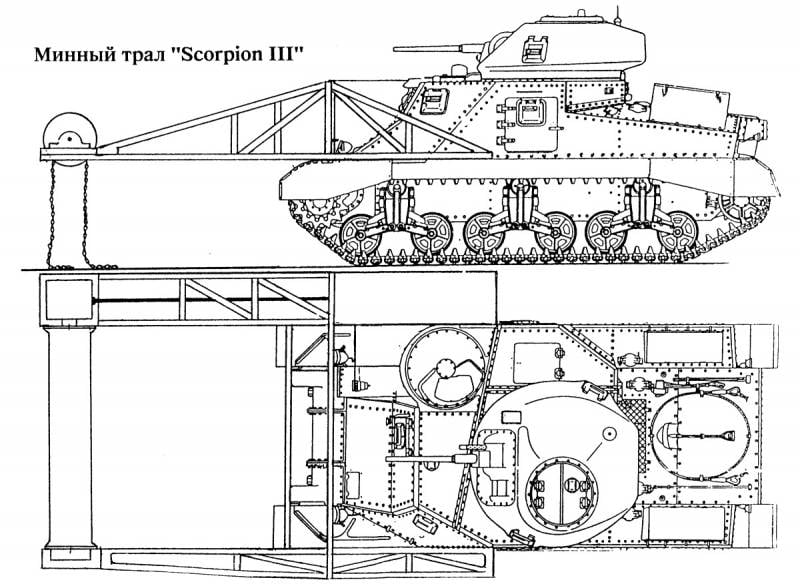
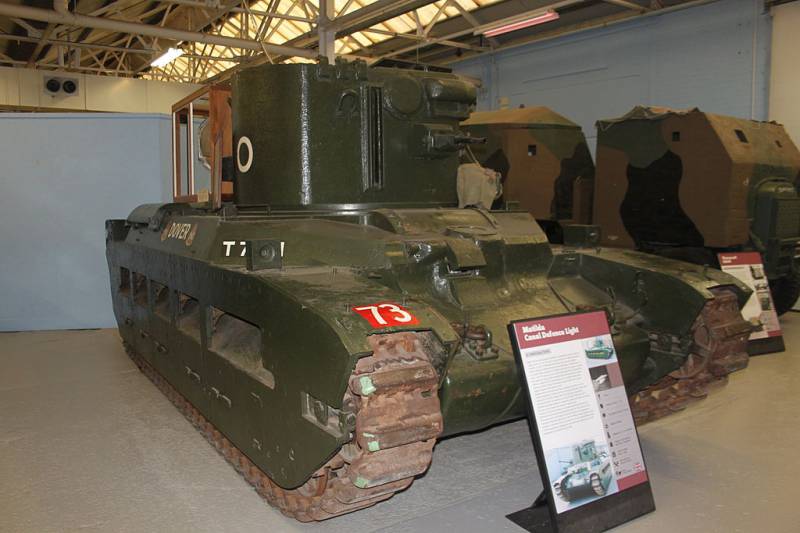
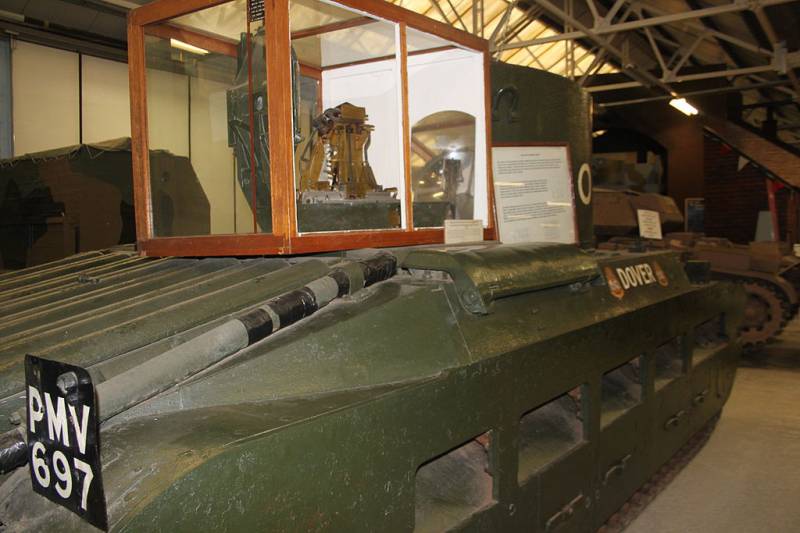
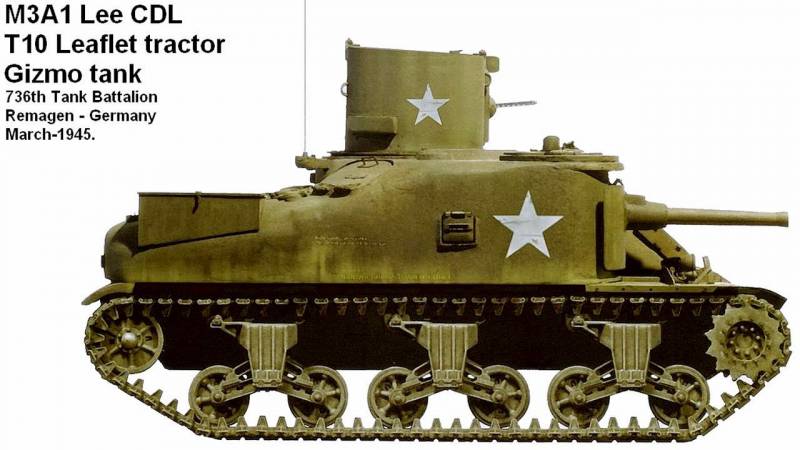
Information